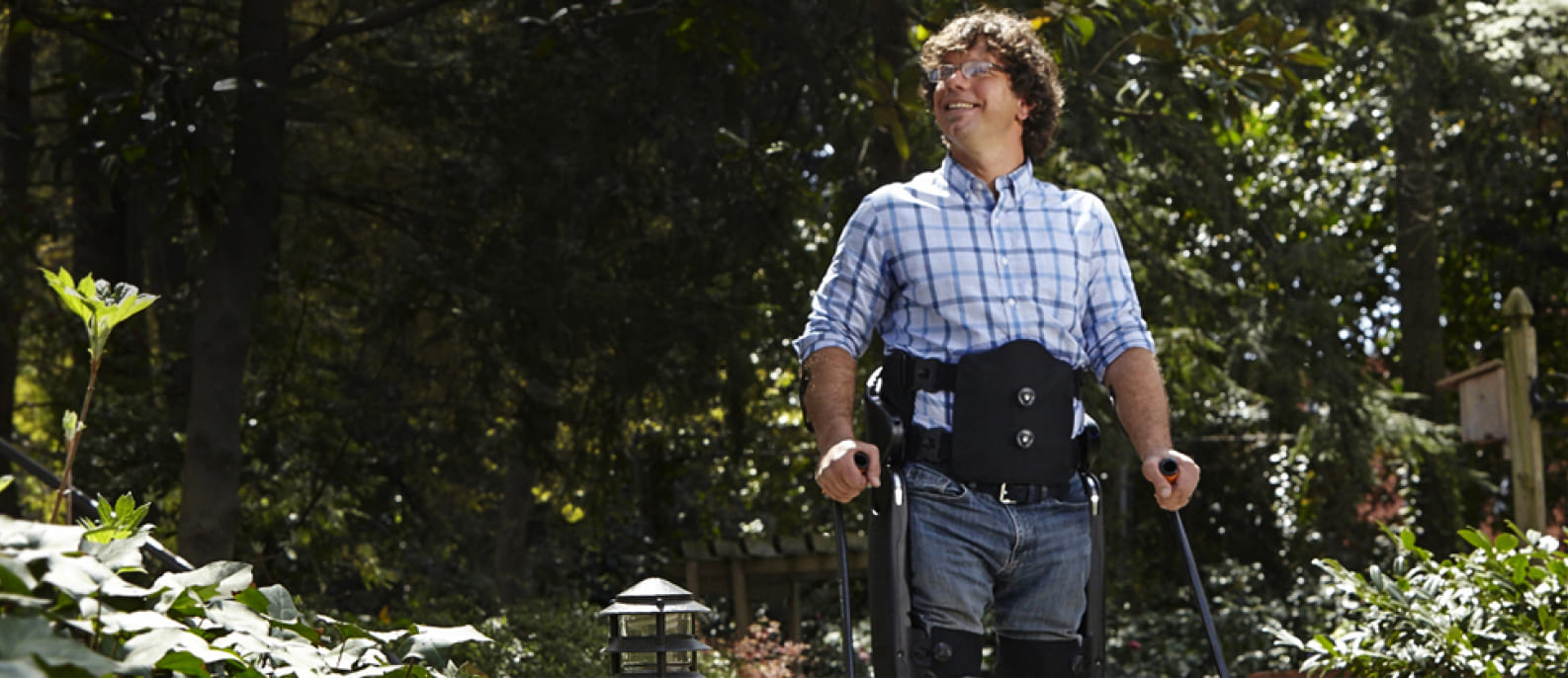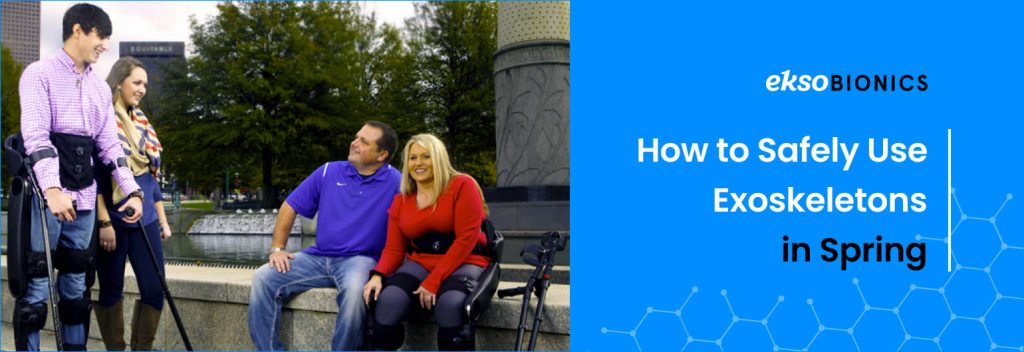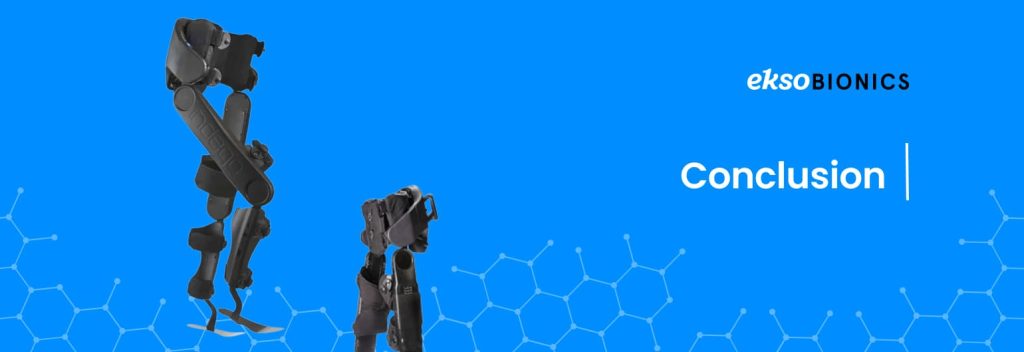On a chilly morning more than three years ago, Paul Austin (formerly a rescue swimmer for the U.S. Navy) and his wife Brandi Koltermann were working on a landscaping job. One last branch had to be cut before the trunk before they removed a large 10-foot tree and ticked it off their list. Paul climbed the tree while Brandi waited on the ground, ready to clear away the brush. Unfortunately, Paul slipped, fell from the tree, broke his back, and severed his spinal cord leading to a complete T11 injury.
Paul’s Recovery Journey After the Injury
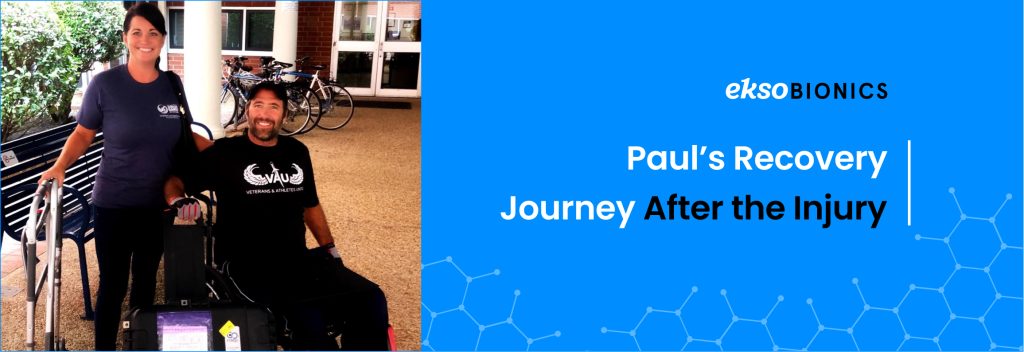
Brandi recalls the accident vividly. She remembers holding Paul’s head and talking to him calmly while he received treatment. When Paul was told he was paralyzed, he was devastated. It dawned on him he had lost everything he had worked hard for.
Paul believed walking again was not an option. When he started rehab in Richmond, Virginia, he noticed the use of exoskeletons in physical therapy, and he asked about “the RoboCop legs.” As a Navy veteran, he went through the Richmond VA Medical Center. He submitted his name to the research department, expressing interest in the exoskeleton, and six months later, he was called to take part in a nine-month program involving therapy twice a week. “The VA definitely helped with this process. They’ve been so supportive,” said Paul.
Seeing exoskeletons being used in rehab gave Paul a glimmer of hope. And when he first stood up with the help of an exoskeleton, Brandi was overwhelmed with emotion. “You lost the use of your legs, and now this gives that back to you,” she said.
Brandi was able to give him a standing hug for the first time since the accident. Paul especially loved that now he could look other people in the eyes. “It’s an indescribable feeling. It is such a good feeling because in your head, you’re thinking you’re never going to walk again, and I can’t do this or that,” he said.
Discovering the Ekso Indego Personal Exoskeleton
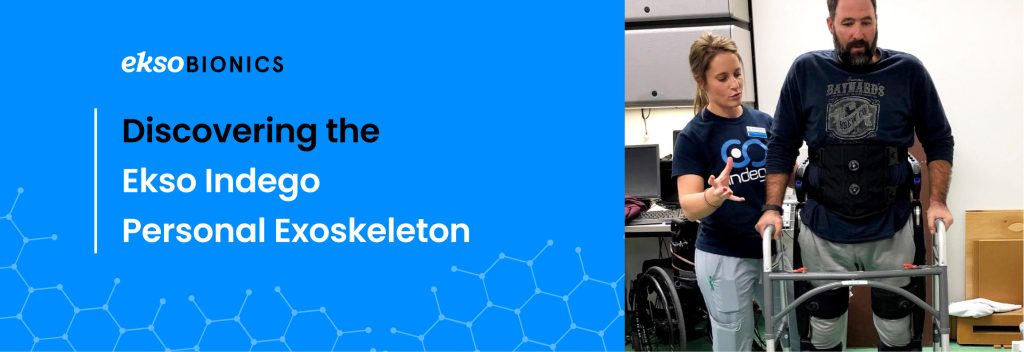
Since the first time Paul saw the Ekso Indego Personal exoskeleton at the 2018 National Veterans Wheelchair Games in Orlando, he knew he had to try it. The device wasn’t as bulky and had fewer components than the one he was using at the time. With the Indego exoskeleton, mobility seemed graceful and very different from his current exoskeleton. After a one-hour trial, he was convinced. The Ekso Indego Personal provided a smoother, more natural gait.
Additionally, it weighed significantly less. The couple wasn’t able to travel with their first exoskeleton, but with the Indego, they could use it on the go. The other exoskeleton felt heavy because of its weight and rigid components, but with the Ekso Indego Personal exoskeleton, walking felt more natural.
The Ekso Indego Personal exoskeleton was very easy to learn to use. He would leave the device charged and assembled in a chair. Then, with Brandi’s help, he would simply transfer in and out as needed. “It does all of the work for you after that!” He did have to get used to walking around at home and on hills and ramps, but after practice, it didn’t take long to get accustomed to the Ekso Indego Personal. Paul now walks three times a week, on average.
A short time after using the Indego, Paul saw extreme improvement in his health, both physically and mentally. His upper body strength, bone, and joint health have improved. And his mental outlook is better. “Thanks to the exoskeleton, there is hope for walking. It’s a great feeling. Everything feels a bit lighter. It’s made a true difference,” said Paul.
With the help of the VA and Indego, the process of acquiring the exoskeleton was streamlined. “As simple as it could be, and the communication was great,” said Paul.
Paul’s daughter is planning to get married, and he fully intends to walk her down the aisle. After learning he was paralyzed, Paul had given up on this dream, but Ekso Indego Personal made his dream possible. As a father, walking his daughter down the aisle is a major life milestone. “It’s a big deal,” he said.
What Does the Future Hold?
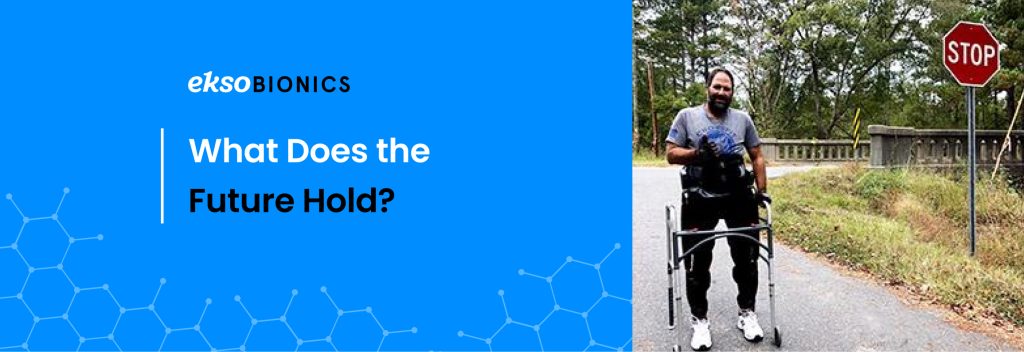
The couple still has a positive outlook on life despite all that has happened. They are always looking forward to new possibilities and opportunities. For example, Paul has been able to start electrotherapy after using the Ekso Indego Personal exoskeleton.
What’s next for the couple? The 9/11 Memorial & Museum 5K Run/Walk in New York City. To prepare for the walk, Paul practices distance walking at home. Their quarter-mile-long driveway is the perfect track. The first goal is to be able to walk a mile with a pine tree or mailbox as the end marker. Recently, Paul has begun walking three-quarters of a mile regularly. He’s excited to reach the one-mile mark. Brandi looks forward to the moment she can say, “You know what, Paul, we did this.”

Brandi keeps an engraving near Paul’s National Wheelchair Games medals that states: “An I can’t become an I did.” Over the past few years, Paul has progressed from believing he would never walk to working towards the goal of walking a mile.
Brandi keeps a list of things that Paul thinks he can’t do because he is in a wheelchair, then crosses things off as they accomplish them together. Crossed off the list are: riding a four-wheeler, scuba diving, using a zero-turn lawn mower, going up in a hot air balloon, and walking!
The couple’s mission is now to encourage others. “We are in a place with technology where the question is, ‘Why not?’ At times, things can seem tough, but just never give up hope and always strive to be better,” they advised.
Although life changed after the injury, Paul and Brandi are still running the landscaping business. They keep receiving requests for work but have switched roles in order to accommodate Paul. Now, Paul cuts lawns, and Brandi does the weeding. Paul is grateful he can still do the landscaping work he loves, even though tree removal is no longer an option.
Indego exoskeletons are now available under Ekso Bionics, and if you’d like to learn more or make an inquiry, get in touch with us today.

